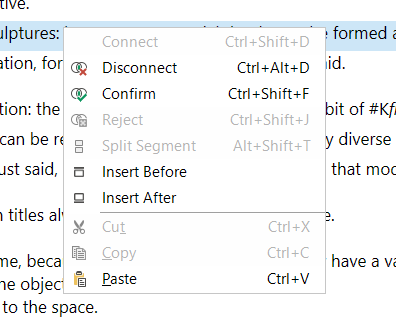I translate texts which often call for reordering sentence structures. I do this while translation, before reviewing texts externally in Word. I understand that retrofit/alignment doesn't perform well in this use case, but I'm prepared to spend the time going through and aligning my source documents with target texts reviewed in Word.
However, I'm hitting a problem. Both in Trados's alignment tool and in the retrofit/update from reviewed target file batch task, the options to split segments are usually greyed out:

It is enabled for some segments. But never where I want it, as fate would have it. And I can't determine any logic as to why it's possible in some contexts, not in others. Is there any option that enables me to split a target segment wherever I want?
Generated Image Alt-Text
[edited by: Trados AI at 1:59 PM (GMT 1) on 22 Apr 2024]


 Translate
Translate


